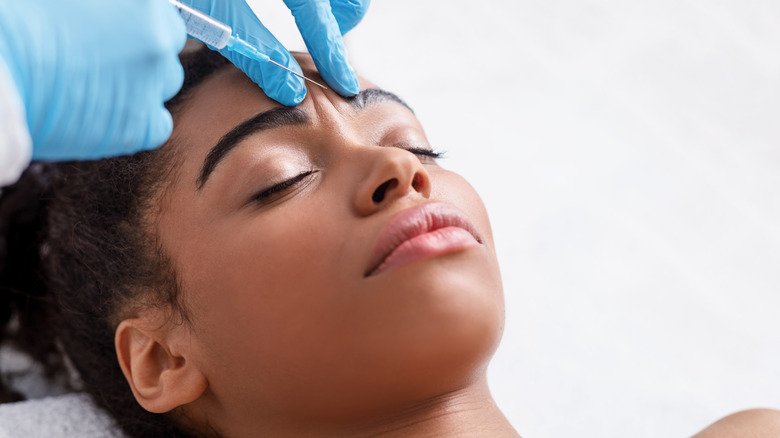Baby Botox Is The Preventative Treatment Taking Over The Internet - Here's How It Works
While taking care of your skin is crucial for looking your best, it can only get you so far. Aging is inevitable, and no amount of healthy lifestyle habits or products can stop its ramifications. Once those pesky fine lines start showing up, many turn to Botox, the trustworthy champion of the beauty industry.
Also known as botulinum toxin, Botox is an injectable drug that works by either temporarily paralyzing muscles or blocking certain nerves, thus minimizing the appearance of wrinkles and preventing new ones from forming. While it's commonly used for cosmetic purposes, Botox can help treat numerous health conditions, including migraines, muscle spasms, chronic pain, and others.
According to a report done by the American Society of Plastic Surgeons, Botox is the most popular non-invasive cosmetic treatment in the U.S., with around 4 to 5 million people getting it done on an annual basis. However, despite its popularity, not everyone seems to enjoy the frozen face Botox leaves you with, which is why Baby Botox has been taking over the Internet. Botox's younger sister, Baby Botox, differs slightly in the procedure itself, and those looking for a more natural look are loving the results.
The treatment uses less Botox
The main difference between the traditional Botox treatment and the Baby Botox procedure is in the dosage used. "'Baby Botox' is defined as smaller doses of Botox injected into each area in comparison to traditional Botox, where more units are injected into each point," plastic surgeon Ashwin Soni, MD, shared in a conversation with Harper's Bazaar. With Baby Botox, Soni explains you'll get more natural-looking results and will still be able to move your facial muscles because the treatment targets them more superficially.
The refreshed look isn't just about the smaller amount of the injectable going into your face; it's also about knowing where to place it for the most natural-looking effect. "The secret to effective 'Baby Botox' is to inject smaller doses in each treatment area and to distribute the doses more widely with additional injection points," Soni shared, adding that administering larger doses of Botox at fewer points is what leads to "frozen" muscles.
The downtime after getting baby Botox is minimal, Byrdie reports, so you can quickly get back to your usual routine; just don't touch your face too much until a few days after the treatment to allow the Botox to properly set in.
Baby Botox is best suited for younger patients
Baby Botox is oftentimes referred to as a preventative treatment, meaning that one gets it to prevent wrinkles in the first place instead of minimizing the appearance of existing lines. Therefore, according to board-certified dermatologist Jennifer Chwalek, MD, Baby Botox "works best for younger patients, or patients who have less defined or etched lines," she told Byrdie. Just like you should start anti-aging products in your 20s, Baby Botox will make most sense sooner rather than later in your skincare journey. If you already have deeper lines you'd like to address, Baby Botox might not provide the effect you're after.
The results of the preventative treatment mostly last around three to four months, Dr. Ashwin Soni tells Harper's Bazaar, and that time period will differ from person to person. "Every patient metabolizes Botox at a different rate, so it depends on when it starts to wear off, which is when you notice some wrinkles starting to return," he explained.
When it comes to side effects, Baby Botox is pretty similar to the traditional version of the injectable. Swelling and bruising of the injection area, as well as headaches, blurred vision, and eyelid ptosis are all possible after effects of Botox, as per the Cleveland Clinic, but are less likely to occur with Baby Botox as there are smaller doses at play. Make sure to get the procedure done at a reputable clinic by a professional who's skilled at Baby Botox specifically to ensure getting the best results possible.
